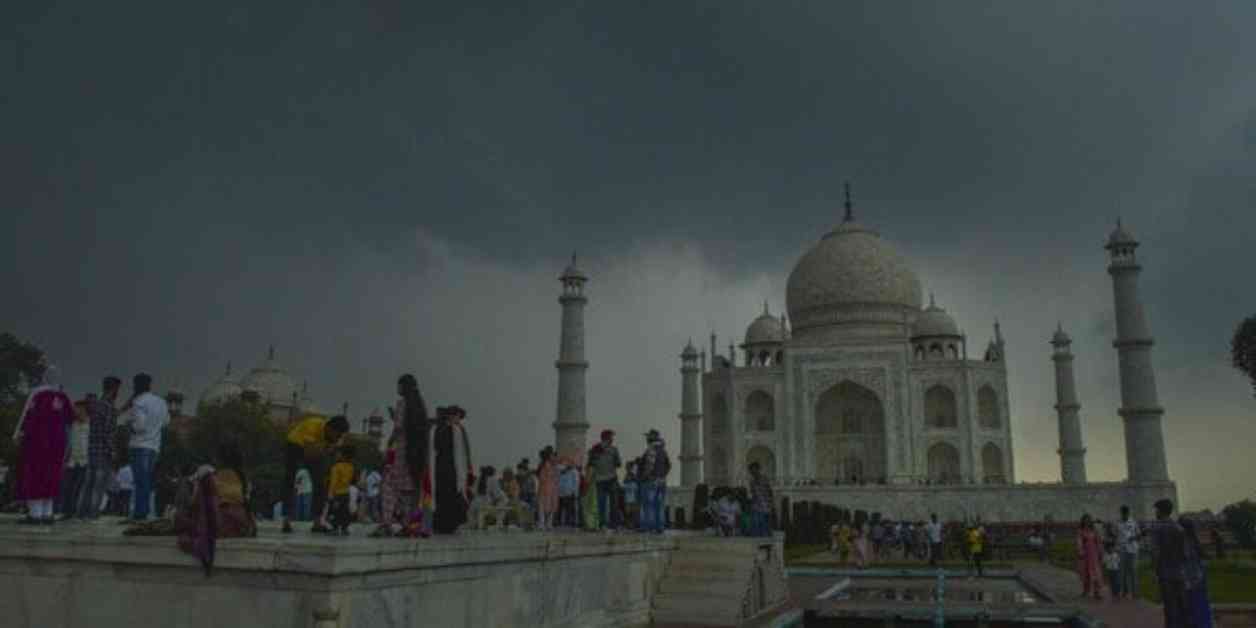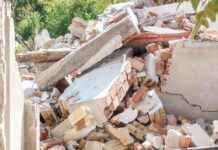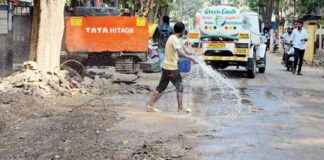Water Leakage in Main Dome of Taj Mahal: ASI Confirms No Structural Damage
Agra: The iconic Taj Mahal in Agra has recently faced challenges as the main dome of the monument witnessed water leakage due to incessant rain for the past three days. The dark monsoon clouds that have been hovering above the Taj Mahal have caused water to seep into the main dome, leading to the inundation of a garden on the premises.
The incident came to light when a purported video of the submerged garden on the Taj Mahal premises went viral on social media, attracting the attention of tourists and locals alike. Concerns were raised about the structural integrity of the main dome, prompting the Archaeological Survey of India (ASI) to investigate the matter.
Rajkumar Patel, the Superintending Chief of the ASI Agra circle, confirmed that there was indeed leakage in the main dome of the Taj Mahal. However, he reassured the public that the leakage was due to seepage and that there was no damage to the main dome. To conduct a thorough inspection, the ASI used a drone camera to assess the extent of the issue.
The Taj Mahal is not only a symbol of pride for Agra but also for the entire nation. It serves as a significant source of employment for hundreds of locals and individuals working in the tourism industry. Monika Sharma, a government-approved tour guide, emphasized the importance of maintaining the monument for the tourism industry, stating that it is the livelihood for many people.
The recent heavy rainfall in Agra has caused waterlogging issues in various parts of the city. National highways have been choked with rainwater, crops have been submerged, and posh localities have experienced waterlogging due to the continuous downpour. As a precautionary measure, the Agra administration has ordered the closure of all schools in the area.
ASI’s Response and Investigation
Following reports of water leakage in the main dome of the Taj Mahal, the ASI sprang into action to assess the situation. Officials from the ASI Agra circle conducted a detailed inspection of the main dome using advanced technology, including drone cameras, to determine the cause of the leakage. After thorough examination, it was confirmed that the leakage was a result of seepage and did not pose any structural threat to the monument.
Rajkumar Patel, the Superintending Chief of the ASI Agra circle, stated, “We have witnessed the leakage in the main dome of the Taj Mahal. After checking, it was confirmed that the issue was due to seepage and there was no damage to the main dome.” The ASI’s prompt response and transparent communication helped alleviate concerns among tourists and locals regarding the safety of the iconic monument.
Impact on Tourism Industry
The Taj Mahal is a major tourist attraction in India, drawing millions of visitors each year from around the world. The recent water leakage incident in the main dome has raised questions about the impact on tourism and visitor experience. Tour guides, local residents, and industry stakeholders have expressed their concerns about the need to ensure the maintenance and preservation of the Taj Mahal for future generations.
Monika Sharma, a government-approved tour guide, highlighted the importance of proper care and maintenance of the monument, stating that it is the livelihood for many individuals working in the tourism industry. The Taj Mahal not only holds historical significance but also serves as an economic driver for the local community. Therefore, it is essential to address any issues promptly to safeguard the monument’s integrity and appeal to tourists.
Challenges Faced by Agra Due to Heavy Rainfall
The recent heavy rainfall in Agra has posed several challenges for the city, including waterlogging, traffic congestion, and infrastructure damage. National highways have been inundated with rainwater, causing difficulties for commuters and travelers. Additionally, crops in the region have been submerged, leading to concerns about agricultural losses.
The posh localities of Agra have also experienced waterlogging issues, highlighting the need for better urban planning and drainage systems. The continuous rain has disrupted normal life in the city, prompting the Agra administration to take precautionary measures, such as closing schools to ensure the safety of residents. The challenges posed by heavy rainfall underscore the importance of sustainable development and disaster preparedness in urban areas like Agra.
In conclusion, the water leakage in the main dome of the Taj Mahal serves as a reminder of the need for proactive maintenance and preservation of our cultural heritage. The ASI’s swift response and investigation have helped address concerns about the structural integrity of the monument. Moving forward, it is crucial for all stakeholders to work together to ensure the protection and conservation of the Taj Mahal for future generations to admire and appreciate.




















